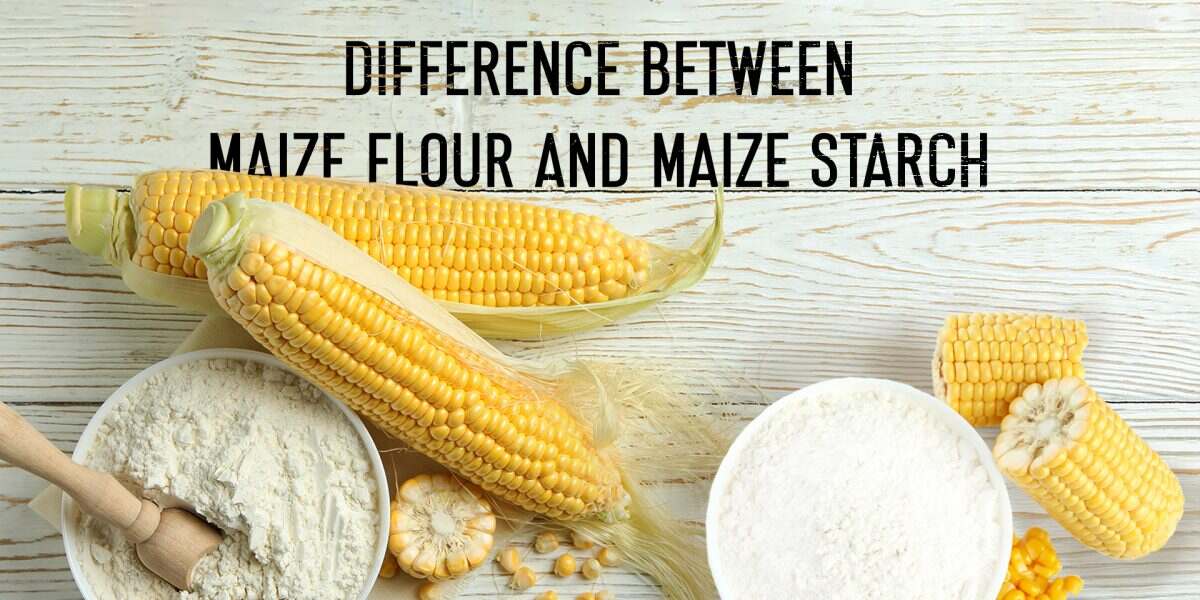Difference between Maize Flour & Maize Starch

Though derived from the same source, its by-products are not always the same. They might have their unique purposes, functions and requirements.
Similarly, though maize flour and maize starch come from same source, both have distinct tastes, motives and utilities. Hence, it becomes crucial to understand the difference between the two. They can not be used interchangeably due to their different nutritional compositions.
PRODUCTION
Maize flour is a finely ground powder made from whole maize kernels. On the other hand, maize starch is a much more refined product made by processing the endosperm through the wet milling process. Through the process, all the proteins, fibres and minerals are separated from the oil.
(When all the proteins and fibres of the kernels are removed, it leaves behind a starchy centre, which is the endosperm.)
NUTRITIONAL VALUE
Maize flour is richer in protein, fibre, vitamins, minerals and starch. It is also rich in Vitamin B, iron, potassium and magnesium. Maize starch is made by separating the protein, fat and fibre.
APPLICATIONS
Maize flour is used in the same way as all flours are. However, the only difference is that it adds a yellowish colour and has a distinctly sweet taste due to its raw material. It can also be substituted for wheat flour.
Maize starch is used in various industries such as food products and beverages, pharmaceuticals, paper, textiles, oil and gas, etc. Typically used as a binding and thickening agent in sauces, gravies, and soups in the food industry, it is mixed with a lower-temperature liquid to create a slurry and then added with a higher-temperature liquid to thicken.
The fact that it is also gluten-free, it is widely used in baking bread, confectionery items and other gluten-free products.
Apart from food products, maize starch is used majorly in the industrial segment as a binder and an adhesive. It has a massive demand in the paper industry as it enables increasing the dry strength and improving the surface and stiffness of the paper. It ensures higher productivity in the production process. Due to its chemical properties, it carries a cationic charge and, therefore, is also known as Cationic Maize starch.
Maize starch is used to prepare certain medicines, tablets and capsules as a disintegrant, diluent and binder. It ensures that the pills and medicines can easily break down and dissolve, enabling the drug to release easily.
| Freshly prepared starch paste at a concentration of 5–20% is routinely used during tablet manufacture. At 5–15% concentration, starch finds its applicability as a disintegrant in a number of tablet formulations. |
Textile industries use maize starch to provide stiffness and to add weight to clothes. It works as a penetrating agent, binder, emulsifier, softener and lubricant. It also ensures the uniform binding of the yarn.
The applications of maize starch are far more diverse than that of its previous counterpart. From production, to taste and uses, maize starch and maize flour have distinct identities and should technically not be used in place of the other. Due to the vast application of starch and its increasing popularity, the demand for maize starch has been intensifying, making it one of the preferred choices in the starch industry.

